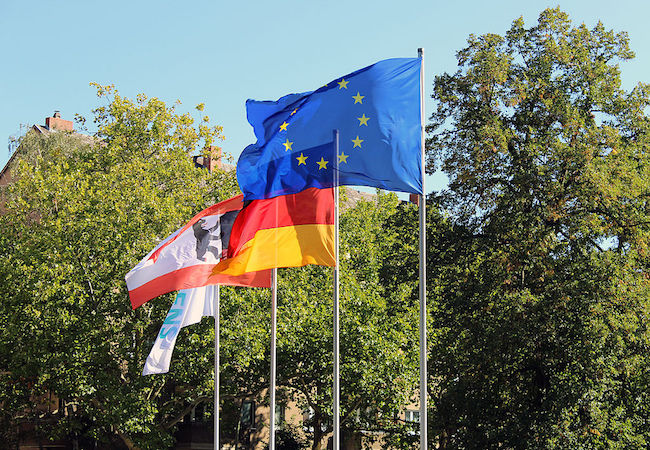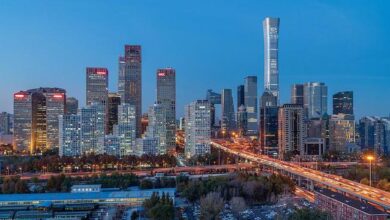
By Fuad Huseinzadeh
It was clear even before the Riga summit held on 21-22 May that the discussion would not be easy. The stumbling block, as should have been expected, was a problem that has been included in the agenda at the request of Europe’s major powers, though it was not directly related to the main idea of the project – the European integration of six post-Soviet states, namely Azerbaijan, Armenia, Belarus, Georgia, Moldova and Ukraine. Contrary to the initially declared objectives of the Eastern Partnership (EaP) program, most of the attention at the negotiations between the leading countries of the European Union was given to Russia, a country that is not a member of this programme. – Such a situation suited Ukraine and two other EaP countries – Georgia and Moldova (in Riga, all these countries reaffirmed their intention to become EU members), but was contrary to the interests of the other three countries that had chosen a less tight integration with the EU. Belarusian leader Alyaksandr Lukashenka, who is not accustomed to speaking diplomatically, later got indignant, saying that the participants in the Riga summit “were prepared to stigmatize Russia in each document, either directly or indirectly … Russia is not a member of the Eastern Partnership. Then why should we batter Russia in its absence, including for Crimea?”
Dissatisfaction of the president of Belarus, which is historically bonded with Russia by a variety of ties and integration associations, is understandable. The reaction of Russia’s satellite, Armenia, was even more predictable. After all, the European Union does not expect Armenia to be independent in its actions, much less to do something that may anger Moscow, ever since the Armenian leadership suddenly renounced its original idea of participation in the Eastern Partnership and hastily joined the Eurasian Union two years ago, just before the Vilnius summit. As for Azerbaijan, it was resentful at the reluctance of Europeans, who seemed to be so strict in their approaches to the letter of the law, to treat conflicts on the territory of EaP member countries in the same way and to condemn Armenia, the aggressor, just as the European Union now unanimously castigates Russia for the annexation of Crimea and for what is happening in the south-east of Ukraine.
As a result, Azerbaijan considered the text of the final document of the summit, the Riga Declaration, as biased because the drafters did not mention the four UN Security Council resolutions which should serve as a basis for solving the problem of the Armenian occupation of Azerbaijani territories.
The absence of President of Azerbaijan Ilham Aliyev at the summit did not prevent Deputy Head of the Presidential Administration Novruz Mammadov and Minister of Foreign Affairs Elmar Mammadyarov from being at least as categorical in stating the presence of “double standards” and their unwillingness to sign the document on behalf of the republic, which showed a biased approach of the Europeans to the fundamental issue of sovereignty and territorial integrity.
This decision of Azerbaijan called into question the outcome of the entire summit, and the organizers started to persuade the representatives of the republic to soften their stance. To this end, President of the European Council Donald Tusk even had to call President Ilham Aliyev in Baku (according to some sources, he called twice). Eventually, Azerbaijan signed the document with reservations.
Speaking after the summit, Mammadyarov told reporters that reservations reflected the main objection to the text of the Riga Declaration – the absence of words that the solution to the Nagorny Karabakh conflict should be based on international law; in particular, it should comply with the UN Security Council resolutions.
Thus, Azerbaijan has carried its point but the unpleasant taste remains. Later, Deputy Head of the Presidential Administration Novruz Mammadov admitted that by signing the Riga Declaration, Azerbaijan made concessions to the EU: “We believe that the spirit of this Declaration does not correspond to the nature of the cooperation between the EU and Azerbaijan. Azerbaijan is a country that has successfully and fully been cooperating with the EU in the post-Soviet space. However, the Declaration’s articles concerning Azerbaijan do not meet this spirit. At the same time, we are not happy with the approach to the settlement of the Nagorny Karabakh conflict”.
What happened in Riga showed the correctness of the position of Azerbaijan, which maintains the need for a uniform attitude to the problems of territorial integrity and the EU’s individual approach to each of the Eastern Partnership countries depending on its interests and level of economic development. Now it has been recognized by Brussels, too. “We fully realize that we, the EU and Eastern Partnership, need new instruments. This was the main issue during our telephone conversation with President Aliyev, which took place after the summit. We talked about the new tools and new approaches. Azerbaijan is set to continue and strengthen cooperation with the EU, there is no doubt about that, and Aliyev made it clear,” Donald Tusk was quoted by the Wall Street Journal as saying.
Meanwhile, the provision of the Riga Declaration on the need to solve conflicts in the Eastern Partnership space, including the Nagornyy Karabakh conflict, on the basis of territorial integrity of states deserves special attention. What is more, this document was signed by Armenian President Serzh Sargsyan. All international organizations as well as the United Nations recognize the territories occupied by Armenia, including Nagornyy Karabakh, as an integral and sovereign part of Azerbaijan.
Another interesting aspect is also worth noting. By signing this document, which reflects support for the territorial integrity of countries participating in the Eastern Partnership, Sargsyan has thus backed the Madrid principles of Karabakh settlement, the implementation of which requires the withdrawal of Armenian troops from the occupied Azerbaijani territories. On the other hand, knowing the degree of Armenia’s dependence on Russia, it could be argued that the participation of the Armenian president in the Riga summit and his signature on the final declaration would not have been possible without Moscow’s approval. Therefore, we can assume that Russia has begun to urge Yerevan to withdraw its troops from the sovereign territory of Azerbaijan.
Along with all this, the latest Eastern Partnership summit can make Baku revise its relations with the EU which, driven by its excessively diplomatic attitude to the problem of Nagornyy Karabakh, is stubbornly trying to equate the aggressor and the victim of aggression. As can be seen, courteous Europeans do not wish to offend Armenia, even taking into account its total disregard for the Eastern Partnership.
In general, the further the Eastern Partnership programme develops the more problems it breeds. The Vilnius summit in 2013 provoked a war in Ukraine, which is still going on, resulting in new victims. Meanwhile, the Riga summit has clearly identified another profound problem: European states are still pursuing a policy of double standards in relation to conflicts in the region of Eastern Partnership, which calls into question the future of this programme in the format in which it was conceived.
Proceeding from their foreign policy priorities, six post-Soviet countries have chosen different forms of cooperation with the European Union. Georgia, Ukraine and Moldova have decided to cooperate within the framework of the Association Agreement, Belarus and Armenia have opted for the Eurasian Economic Union in which Russia is the engine room, while Azerbaijan builds its relations with the EU in a bilateral format considering it the most convenient format of relations. Incidentally, on the eve of the summit, the Azerbaijani Foreign Minister passed to EU Commissioner for European Neighborhood Policy and Enlargement Negotiations Johannes Hahn and European foreign policy chief Federica Mogherini a draft agreement on strategic partnership between Baku and Brussels. It was noted during the meeting that Azerbaijan has strategic partnerships with a majority of EU member countries. It was also emphasized that this document may create opportunities for the development of cooperation between Azerbaijan and the European Union in the strategic dimension.
However, if the European Union has decided to divide the six EaP member countries into “friends” and “foes” based on their attitude to the events in Ukraine and, at the same time, continue to maintain different attitudes towards separatism in other regions, then Azerbaijan and the EU will go their separate ways. The partnership involves consideration for mutual interests of the parties, whereas the current cooperation between Baku and Brussels is largely a one-sided relationship. If the European Union continues to ignore the problem of the occupation of parts of Azerbaijani territory, the republic may seriously reconsider the bilateral relations. Love cannot be forced. After all, what kind of partnership is it if your partner does not recognize your sovereignty?
Summing up the topic of Azerbaijan’s expectations for the integration with the European Union, which were natural but proved to be too high, it would be good to quote an apt expression of French Senator Nathalie Goulet: “Today, our continent is like a big marketplace, why to get involved?”




